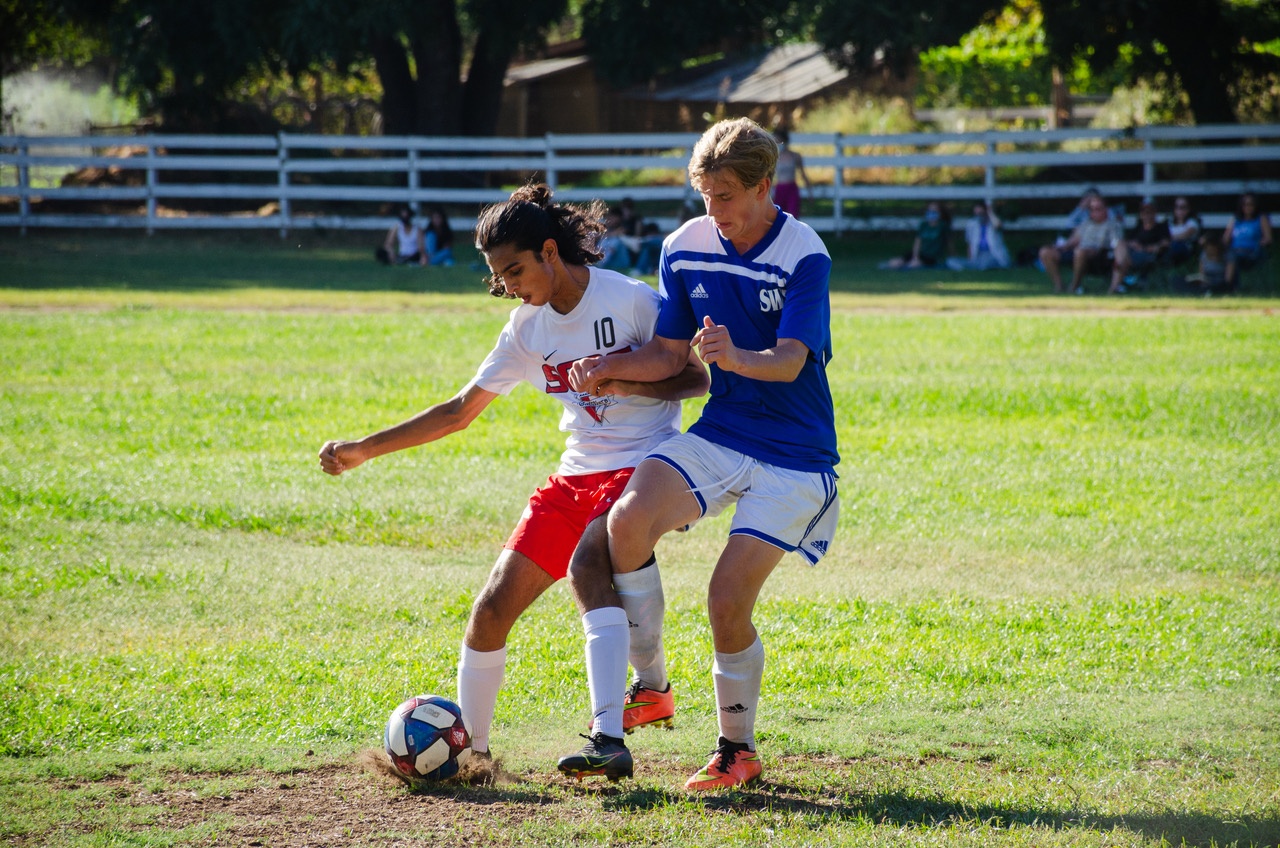In response to Sacramento County’s drop from the purple to the red tier for COVID-19 cases, Country Day shifted to its hybrid learning plan on Oct. 20 and was able to hold several weeks of partially in-person learning.
However, when cases started rising all over the country and when Sacramento County moved back up to the purple tier on Nov. 13, Head of School Lee Thomsen announced in a Nov. 20 Friday email that school would be returning from Thanksgiving break to a fully remote schedule. Country Day plans to return to its hybrid schedule on Dec. 14.
But there’s a big problem with the hybrid plan for high school students that needs to be addressed before Dec. 14 — 25 minutes is not enough time for lunch.
Pre-COVID-19, when students attended school on campus, they had 40 minutes for lunch, which gave them ample time to relax and hold club meetings. The shorter lunch time leaves little time for either.
In a recent poll, The Octagon asked 144 Country Day high school students how they felt about the 25-minute lunch. Sixty-two students responded. Sixty students said the lunchtime is too short, one student said it was “perfect” and another said it is too long.
Students at school are required to eat socially distanced on the backfield; walking from the high school quad to the field and back takes up at least five minutes from the 25 minutes they have to eat.
For the students at home, although they don’t have to walk anywhere, preparing and eating lunch takes time.
Also, lunch periods aren’t only used for eating. Now, clubs like Current Events or Leadership Lunches have been rushed to accommodate for the new timing.
Although clubs can meet after school, it’s not ideal for students with afterschool commitments and homework, especially after having school all day.
Even college counseling time, known as C-Day meetings, which used to happen during the lunch hour can no longer be held at that time because 25 minutes isn’t enough time. Now, seniors and college counselors have to make up for that lost time and exchange information in other ways, such as by email.
The school’s policy for the shortened lunch was to limit the amount of time that students would be near each other with their masks off. However, the same can be said about 50-minute free periods, during which students can socialize.
Yes, during free periods students have the option to sit in the gym and work socially distanced with a faculty member watching. However, it’s not the only option. During their free periods, high school students can sit wherever they want; students can sit by the tables in the high school quad, in the garden or even in the backfield. In those places, students aren’t being monitored. So, eating lunch for a longer period of time while teachers are watching shouldn’t be an issue.
In order to increase lunchtime, the school day doesn’t necessarily need to be extended.
Currently, there are four five-minute passing periods per day, but in the past, passing periods were only three minutes. Why do we need to add an extra two minutes for every passing period, especially when there are fewer people on campus?
If the extra time is for teachers to clean the desks, it would just be easier to make it mandatory for students to wipe their own desks before leaving.
The students on Zoom don’t even need passing periods, so reducing the passing period times to three minutes would add an extra eight minutes to lunch.
More time savings can be realized by cutting minutes off of breaks.
Each day there are two 10-minute breaks, which could be reduced to seven minutes, adding an extra six minutes to lunch.
A total of 14 minutes can be added to lunch by trimming a few minutes from passing periods and breaks, increasing the lunch time from 25 minutes to 39 minutes.
This would be a more relaxing lunch for both students and faculty, and clubs can meet for a longer period of time if they wish.
Every minute counts.
— By Staff
Originally published in the Nov. 17 edition of the Octagon.

